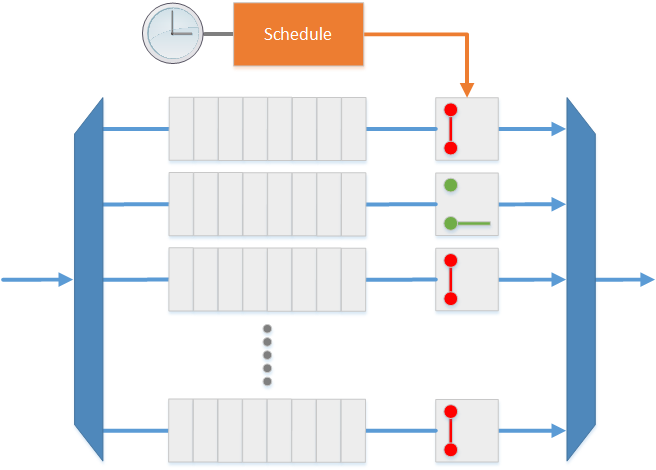
Time-Sensitive Networking (TSN)
A Real-Time Ethernet Solution Available in an Open IEEE 802.1 Standard

Let’s talk about the specifications
Feel free to contribute
According to TSN (Time-Sensitive Networking) standards, the recommended guidelines for guard bands between time slots in Qbv (quality of service-based scheduling) is an offset of at least 2 TSN frames. This guidance is based on the length of TSN frames and their respective transmission intervals. Having a minimum balance of two TSN frames ensures no conflicts arise because TSN frames overlap when transmitted from different traffic classes. As such, it provides a reliable mechanism for preventing data loss or corruption during time-sensitive communication operations. Furthermore, by having this guard band in place, TSN networks can provide a higher quality level…
Continue Reading » Recommended guidance for guard bands between time slots in Qbv?
In Time-Sensitive Networking (TSN), why is Precision Time Protocol (PTP) used for time synchronization instead of GPS/GNSS or SyncE? One of the critical features of Time-Sensitive Networking (TSN) is the ability to synchronize different networked devices to ensure reliable communication. A dedicated protocol called Precision Time Protocol (PTP) is typically used for this synchronization to be accurate and predictable. This contrasts with other methods, such as GPS/GNSS or SyncE, which are more commonly used for time synchronization in different networking contexts. One reason for the use of PTP lies in its ability to work over longer distances, even over large…
Continue Reading » Why Is PTP used Instead Of GPS/GNSS Or SyncE?
IEEE 802.3br Interrupting & IEEE 802.1Qbu interspersing express traffic (IET) is a mechanism that allows high-priority traffic to override lower-priority traffic on a network. When IET is enabled, low-priority traffic is pulsed while the high-priority message is transmitted. The low-priority letter resumes without discarding the previously shared piece of the interrupted traffic. This allows for a smoother traffic flow on a network and reduces the risk of dropped packets or lost data. Frame preemption can be especially useful in situations where real-time applications are being used. While the introduction of guard bands was a crucial step in addressing network congestion…
Continue Reading » IEEE 802.3br & IEEE 802.1Qbu: The Next Evolution in Network Performance
Time synchronization is an essential aspect of networked systems and applications. One method for ensuring consistent time synchronization is through the use of IEEE 802.1AS, a standard developed by the Institute of Electrical and Electronics Engineers (IEEE). This protocol works by transmitting highly accurate time information over a local area network, or LAN, allowing all connected devices to sync perfectly. While IEEE 802.1AS can be used in a variety of different network configurations, it is particularly useful for applications, where precision timing can be critical. Whether you are developing real-time applications or managing complex network infrastructure, IEEE 802.1AS can help…
Continue Reading » Is IEEE 802.1AS Time synchronization important?
The IEEE 802.1Qbv is a groundbreaking standard that has revolutionized the way networks are managed and optimized. This protocol is designed to provide real-time shaping of traffic flows, allowing you to better manage your network’s bandwidth usage and improve overall performance. Understanding the features and benefits of the IEEE 802.1Qbv will help you get the most out of your network. Some of the key advantages of this protocol include its time-aware capabilities, which allow it to dynamically adapt to changes in network conditions in real-time, as well as its ability to automatically optimize bandwidth allocation for different applications and users.…
Continue Reading » Why should you care about the IEEE 802.1Qbv?

Didn’t find what you were looking for?
Still have questions?



